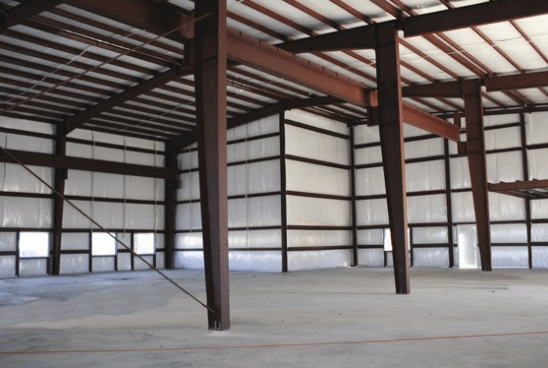| A |
A1. All usages within self-contained dwelling units (a unit occupied by a single family or a modular student accommodation unit with a secure door and comprising
not more than six single bedrooms and an internal corridor). Communal areas (including kitchens) in blocks of flats with limited use (see Note 1).
For communal areas in other blocks of flats, see A5, A6 and C3 |
1.5 |
2.0 |
| A2. Bedrooms and dormitories except those in self-contained single family dwelling units and in hotels and motels |
1.5 |
2.0 |
| A3. Bedrooms in hotels and motels; hospital wards; toilet areas |
2.0 |
2.0 |
| A4. Billiard/snooker rooms |
2.0 |
2.7 |
| A5. Balconies in single family dwelling units and communal areas in blocks of flats with limited use |
2.5 |
2.0 |
| A6. Balconies in hostels, guest houses, residential clubs and communal areas in blocks of flats except those covered by Note 1 |
Same as the rooms to which they give access but with a minimum of 3,0 |
2,0 (concentrated at the outer edge) |
| A7. Balconies in hotels and motels |
Same as the rooms to which they give access but with a minimum of 4,0 |
2,0 (concentrated at the outer edge) |
| B |
B1. General use other than in B2 |
2.5 |
2.7 |
| B2. At or below ground floor level |
3.0 |
2.7 |
| C |
C1. Areas with tables |
|
|
| C11. Public, institutional and communal dining rooms and lounges, cafes and restaurants (see Note 2) |
2.0 |
3.0 |
| C12. Reading rooms with no book storage |
2.5 |
4.0 |
| C13. Reading rooms with no book storage |
3.0 |
3.0 |
| C2. Areas with fixed seats |
4.0 |
3.6 |
| C21. Assembly areas with fixed seating (see Note 3) |
3.0 |
2.7 |
| C22. Places of worship |
3.0 |
2.7 |
| C3. Areas without obstacles for moving people |
|
|
| C31. Corridors, hallways, aisles in institutional type buildings not subjected to crowds or wheeled Corridors,
hallways, aisles in institutional type buildings not subjected to crowds or wheeled by Note 1 |
3.0 |
4.5 |
| C32. Stairs, landings in institutional type buildings not subjected to crowds or wheeled vehicles,
hostels, guest houses, residential clubs, and communal areas in blocks of flats not covered by Note 1 |
3.0 |
4.0 |
| C33. Corridors, hallways, aisles in all buildings not covered by C31 and C32,
including hotels and motels and institutional buildings subjected to crowds |
4.0 |
4.5 |
| C34. Corridors, hallways, aisles in all buildings not covered by C31 and C32,
including hotels and motels and institutional buildings subjected to wheeled vehicles, including trolleys |
5.0 |
4.5 |
| C35. Stairs, landings in all buildings not covered by C31 and C32, including hotels and
motels and institutional buildings subjected to crowds |
4.0 |
4.0 |
| C36. Walkways — Light duty (access suitable for one person, walkway width approx 600 mm) |
3.0 |
2.0 |
| C37. Walkways — General duty (regular two-way pedestrian traffic) |
5.0 |
3.6 |
| C38. Walkways — Heavy duty (high density pedestrian traffic including escape routes) |
7.5 |
4.5 |
| C39. Museum floors and art galleries for exhibition purposes |
4.0 |
4.5 |
| C4. Areas with possible physical activities |
|
|
| C41. Dance halls and studios, gymnasia, stages (see Note 5) |
5.0 |
3.6 |
| C42. Drill halls and drill rooms (see Note 5) |
5.0 |
4.5 |
| C5. Areas susceptible to large crowds |
5.0 |
4.5 |
| C51. Assembly areas without fixed seating, concert halls, bars and places of worship (see Note 4 and Note 5) |
5.0 |
3.6 |
| C52. Stages in public assembly areas (see Note 5) |
7.5 |
7.0 |
| D |
D1. Areas in general retail shops |
4.0 |
3.6 |
| D2. Areas in department stores |
4.0 |
3.6 |
| E |
E11. General areas for static equipment not specified elsewhere (institutional and public buildings) |
2.0 |
1.8 |
| E12. Reading rooms with book storage, e.g. libraries |
4.0 |
4.5 |
| E13. General storage other than those specified (see Note) |
2.4 per metre of storage height |
7.0 |
| E14. File rooms, filing and storage space (offices) |
5.0 |
4.5 |
| E15. Stack rooms (books) |
2.4 per metre of storage height but with a minimum of 6.5 |
7.0 |
| E16. Paper storage for printing plants and stationery stores |
4 per metre of storage height |
9.0 |
| E17. Dense mobile stacking (books) on mobile trolleys, in public and institutional buildings |
4.8 per metre of storage height but with a minimum of 9.6 |
7.0 |
| E18. Dense mobile stacking (books) on mobile trucks, in warehouses |
4.8 per metre of storage height but with a minimum of 15.0 |
7.0 |
| E19. Cold storage |
5.0 per metre of storage height but with a minimum of 15.0 |
9.0 |

